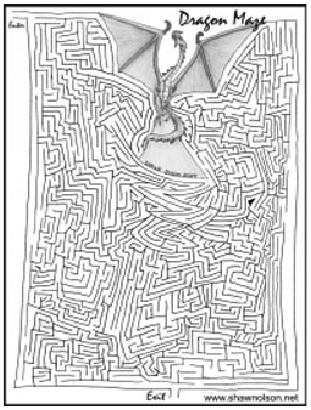
| Maze Escape |
Suppose you are stuck in an n by m maze of cells and you want to escape from it using as few steps as possible. You know that there is a single cell (door cell) that you can escape from. However, the door cell is initially closed and you cannot even move through it. In order to open the door cell, you first have to push a box to a certain position in the maze (button cell).

At each step you can move to one of the north, south, west and east neighboring cells, as long as it is open (not a wall or the closed door cell). In order to push the box, you must be in one of its neighboring cells with an open cell on the other side to move the box into (for example, if you are in the cell north of the box and the cell south of it is open, you can push the box, resulting in both you and the box moving one cell to the south). Pushing the box only counts as one step. While the box is in the button cell, the door cell is open and you can escape the maze through it.
Input consists of a number of test cases. Each test case begins with two integers n and m, the number of rows and columns in the maze
respectively (
2![]() n
n![]() 20,
2
20,
2![]() m
m![]() 20). This is followed by n lines each containing exactly m characters, representing the maze.
20). This is followed by n lines each containing exactly m characters, representing the maze.
These characters are limited to:
Assume that the entire maze is surrounded by walls (in other words, you may never move nor push the box out of the maze) and that there is exactly one each of `d', `b', `x', and `@' (this means that the door is initially closed since the box will never start on the button). Each test case is followed by a blank line, and input is terminated by a line containing `0 0' which should not be processed.
For each test case, print a line containing the minimum number of steps needed to escape from the maze, or the words `No Way!' if it is impossible to escape.
3 3 d.b .@. x.# 3 5 ...d. .#x#. ...@b 0 0
No Way! 20